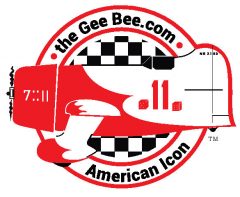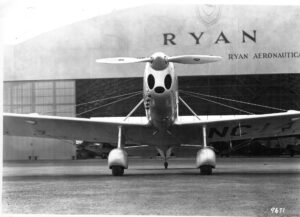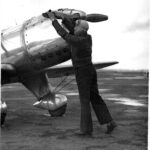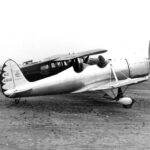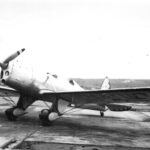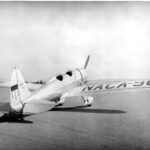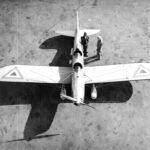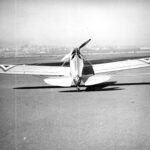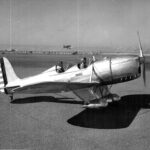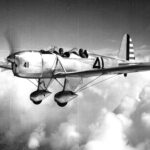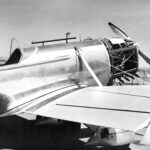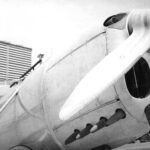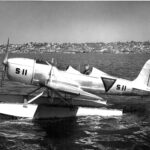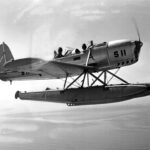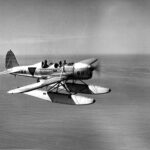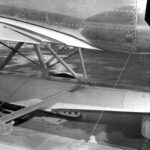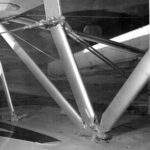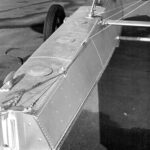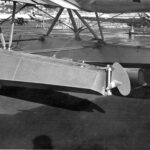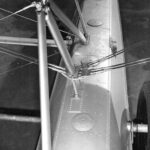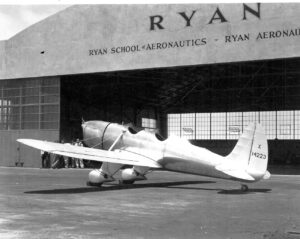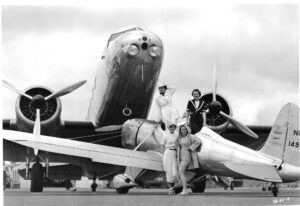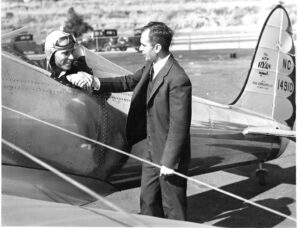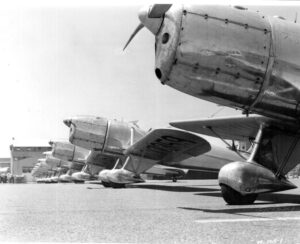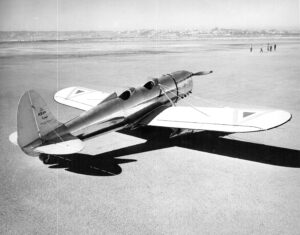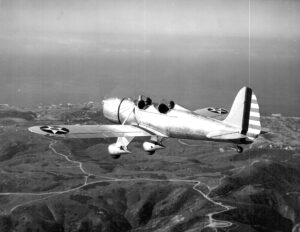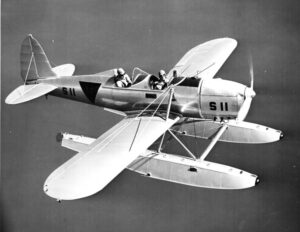Featuring Press Release photos from the Len Wieczorek collection
T. Claude Ryan gained substantial name recognition when Charles Lindbergh crossed the Atlantic in 1927 in his Ryan Mailplane-based “Spirit of St. Louis”. In 1934, he formed the Ryan Aeronautical Company and introduced a sleek low winged, metal-fuselaged, sport and training aircraft that would revolutionize the industry. The Ryan S-T went on to become the first low wing primary trainer for the United States military and many foreign nations as well. One of the most beautiful designs of aviation’s golden age, the Ryan ST remains a coveted classic aircraft today.
American aviation in the early 1930’s was heavily influenced by the National Air Races. The popular Greve Race ((550 cubic inch maximum) was dominated by aircraft powered with the air cooled Menasco four cylinder Pirate engines. These inline engines permitted superior streamlining, higher speeds and very sleek designs. In 1934, the first year of the Greve Race, Claude Ryan introduced the ST, incorporating a metal monocoque fuselage, wing flaps, and race-inspired streamlining. The aircraft was fully aerobatic and while the wings and tail were fabric covered, more than one press release cited the “little all-metal Ryan plane”. Such was the case when pilot Peter Dana, great grandson of Henry Wadsworth Longfellow, attempted to set the fastest time across the U.S. from Canada to Mexico in his Ryan ST in May, 1936.
The National Advisory Committee for Aeronautics (NACA) purchased an STA (Aerobatic) Special with 150hp supercharged Menasco C4S for new flight research projects. Interestingly, NACA stated that it was the only plane of its size which had transport plane operation characteristics.
But America was still grappling with the Great Depression and only a few ST’s were sold. Ryan focused on increasing the number of distributors and engaged with foreign governments on military trainer contracts. This proved fruitful and 46 Ryan ST’s were produced in 1937. Ryan continued to develop the STA Special as a military trainer for domestic and export markets. A military version of the 125hp Ryan STA won a military trainer design competition and the Ryan STM (Military) was born.
Ryan STM’s were exported in numbers to to the air forces of Mexico, Guatemala, Honduras and Nicaragua before they were used for military service in the United States. The supercharged 150hp Menasco C4S version was popular in South America due to its superior high-altitude performance.
The Army’s YPT-16, an early version of the militarized Ryan STA trainer, was placed in service and for the first time in 30 years Air Corps flying cadets received their primary flight instruction in a monoplane. The Ryan ST as a modern low wing military trainer opened a new avenue for growth for the Ryan Aeronautical Company.
The STM-2, also introduced in 1937, featured wider cockpits to accommodate pilots with parachutes, external fuselage stringers and provisions to mount armament. With installation of a 30 cal machine gun under the engine cowl and the front cockpit covered, the Ryan STM-2 was positioned as an excellent single-place pursuit trainer. Ryan STM2’s were exported in numbers to many foreign air forces including Nationalist China and the Netherlands East Indies.
In 1939 the US Army Air Corps transitioned from the YPT-16 into the STM-2 which it designated the PT-20. At the same time the Air Corps expanded its primary training program whereby cadets received primary flight instruction at nine selected flying schools, instead of at Randolph Field as was the prior practice.
For the latter half of the 1930’s, Ryan pioneered the low wing trainer field and due to wide acceptance of the ST by the United Sates and foreign governments, Ryan trainers became recognized as leaders in this field.
In 1941, Ryan built 50 seaplane versions of its basic PT-20 military trainer for the Netherlands East Indies Navy. Powered with Menasco 150hp supercharged C4-S engines the acrobatic seaplane trainers were operated from the naval base at Surabaya, Java where refugee Hollanders trained on STM-S2s then went direct to twin-engine patrol boats with Dutch squadrons of the RAF Coastal Command.
In the end, the inline Menasco engine which gave the Ryan ST its attractive profile proved unreliable in service with the US Army Air Corps. Many YPT-16/PT-20’s were re-engined with 5 cylinder Kinner radial engines which led to a major redesign and the ST gave way to the Ryan PT-22. More than 1,000 PT-22 Recruits were produced during World War 2, by far the largest production run of the Ryan military trainer line.
Look for more on the radial-engined PT-22 and the composite Ryan PT-25 in a follow on photo-essay post. Additional Ryan ST press release photos are presented below.
References:
Ryan Aeronautical Company Press Release Photos, Len Wieczorek collection
The Ryan Story, Antique Airplane News, August 1956
Wikipedia, Internet
Additional Ryan Press Release Photos
(click to view)
The Ryan ST went on to become the first low wing primary trainer for the United States military and many foreign nations as well.
Click Images to Enlarge
